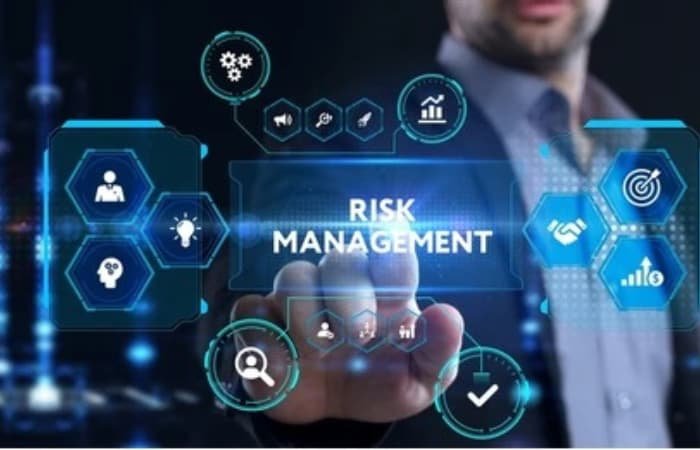
10 Effective Steps in Risk Management Process to Improve Project
The project risk management process is essential for teams because risk and uncertainty are fundamental components of all project activity. This explains why many projects, particularly sizing technological projects, have difficulties. We can see how readily risk translates into actual problems for projects and their companies when studies show that almost half of all IT projects go over budget and past their deadline.
However, there are ways to reduce and control risk. Teams can properly and thoroughly identify and address all project risks with a robust project risk management process. An effective risk management process results in fewer problems and greater readiness for all contingencies.
What is Risk Management?
The activity of identifying, evaluating, and preventing or minimizing risks to a project that have the potential to affect the desired outcomes is known as risk management of the project. Typically, project managers are in charge of supervising the risk management procedure for the entire course of a particular project.
Project managers need a firm grasp of their goals to spot any potential roadblocks to the team’s capacity to achieve outcomes and manage risk efficiently.
Anything that has the potential to affect the timeline, effectiveness, or cost of your project is a risk. In a project management setting, risks are potentialities that, if they materialize, are categorized as “problems” that call for a risk response strategy. Identifying, organizing, prioritizing, and planning for risks before they materialize is the process of risk management.
For various projects, risk management might mean different things. Risk management tactics on large-scale projects may require detailed preparation for each risk to ensure mitigation plans are in place if problems develop. Risk management for more minor projects may entail a straightforward, prioritized list of the high, medium, and low priority risks.
Steps of Risk Management Process
Here are ten project risk management process steps that will help you keep everything on track:
Find Out Who Your Stakeholders Are
Your project’s overall success and the efficiency of your risk management strategy depend heavily on your stakeholders. Start your risk management initiative with them. You can determine their identity and begin to get to know them.
Set up meetings and take advantage of this opportunity to formally and informally get to know your stakeholders. Concentrate on people who can most affect or influence your endeavor. Consider how you can convince any influential individuals who could disagree with or contradict your thoughts.
When possible, try to have in-person conversations. Take the time to learn from the achievements and failures of previous project managers who have dealt with these stakeholders if they are accessible.
Make a Project Register
Make a spreadsheet risk register for your project. Include fields for the risk description, likelihood, impact, owner, risk response, action, and status, along with the date the risk was logged. A successful project risk management strategy must start with a way to track information reliably.
Identify Project Risks
Discuss all existing project risks with the key players on the team and the project’s stakeholders. Ask individuals about their worries or any prospective issues after going over all the necessary variables to finish the job. Determine the risks associated with the project’s specifications, technology, materials, budget, personnel, quality, suppliers, legal requirements, and any other project risks.
Identify Opportunities
Consider both potential opportunities and potential risks when identifying risks. For instance, include everything that might, in some way, benefit your project. For example, what kind of effects would a wildly popular concert have? What could you do to take advantage of this chance and prepare for it? Plan for unusual achievements in the same way that you anticipate and prepare for problems.
Determine Impact and Likelihood
Determine the impact of each risk in terms of time, cost, quality, and even benefits if it were to occur. Rate the likelihood of each project risk on a scale of 1 to 5.
Determine the Response
Focus your attention on those risks with the highest potential impact and likelihood of happening (i.e., an estimate of three or more on the scale mentioned in No. 4). Identify what you can do to lower the probability and impact of each project risk. To reduce the effect, get to the root cause by asking why?
Estimation
Once you have decided how you will address each risk, calculate the cost of doing so. For instance, how much would it cost to ensure the performer’s health before the concert, and how much would it cost to plan for a backup? Give a range of estimates and, as a contingency, include the total cost of these risk responses in your overall project estimate.
Assign Owners
Give each project risk an owner. The person best prepared to manage and keep an eye on a particular chance should be the owner. Assign risk owners with input from your team and stakeholders to gain the best buy-in possible. Work together to decide the best course of action that needs to be taken and by when.
Review Project Risks Frequently
Ignoring time at least once a week to find new risks and track the development of all logged items is a critical component of any risk management strategy in project management. Project risk management is a process that must be carried out throughout the project, not just in the initial planning stages.
A Project Risk Report
Make sure to include a list of any risks in your status report that have an impact and a likelihood of four or above (on a scale of one to five; see No. 4). At steering committee meetings, promote discussion of the top ten risks so that executives can offer advice and guidance.
Conclusion
There is a lot to do when you start a new project. But one thing that can significantly affect your ultimate success is how you approach risk management. The objectives of the risk management process are to:
- ensuring that all rules and regulations are followed,
- ensuring that all laws and regulations are followed,
- providing relevant risk-based information to support decision-making
Ultimately, this contributes to the improvement in
- operational effectiveness,
- the efficiency of procedures,
- effectiveness of approaches.
So, to improve your project and eliminate all the risks, you need to implement a good cybersecurity framework for risk management.




